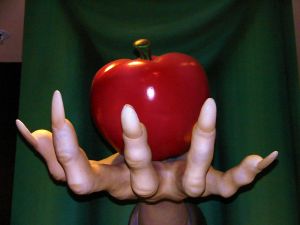Rheumatoid Arthritis is an auto-immune disease that affects joints primarily (cartilage and the synovial membrane). There is no known cause and cure of RA. Medical Science states that body’s own immune system gets misdirectional and identifies its own joints tissues as foreign and starts attacking on them. Though there is no cure but there are several treatments available to manage the disease.
The disease is more prevalent in females with the ratio being 3:1 between females and males. Most commonly the start age is above 40, but can occur at any age and among children also as Juvenile RA. Even after years of research, it is only said there is a genetic predisposition and an environmental trigger for the disease.
Symptoms of Rheumatoid Arthritis
Mostly RA is misdiagnosed as osteoarthritis and often ignored as muscle stiffness or reduced flexibility due to aging. Early detection is important as the disease progression may cause deformity and disability. Following are the symptoms of RA.
- Mostly at the start, the disease affects hands (wrists and joints of fingers) and feet and then spread to other joints. The symptoms are stiffness and inflammation.
- Also mostly there is mostly a bi-lateral pattern for the disease i.e. both hands, both feet.
- Muscle stiffness which is highest in the morning and improves later in the day
- Inflammation i.e. redness, tenderness and a warm feeling.
- Pain due to inflammation
- Fatigue and loss of energy
- lack of appetite with low-grade fever
- Muscle and joint aches and swelling
- There are times when the disease is in remission. When there is a relapse, the joints become red, swollen, painful and stiff.
- As rheumatoid arthritis a systematic disease, inflammation can hamper other part, organ and joints of body too. Inflammation in the issue of eye gland or mouth results into dryness.
- Other sensitive organs such as heart, lungs etc. can also get affected by RA
Diagnosis of Rheumatoid Arthritis
Diagnosis of Rheumatoid Arthritis may be difficult as the results may still be negative after months of joints ache.
- Usually symptoms of morning stiffness, at least three joints having similar symptoms or both sided body joints having the symptoms, subcutaneous nodules are the primary examination of RA
- In the lab tests X rays may show changes in joints
- Blood tests are done to examine the Rheumatoid factor and other abnormalities. Rheumatoid factor is revealed in about 80% of the cases for a clear diagnosis.
- Higher erythrocyte sedimentation rate (ESR) shows inflammation
Even after diagnosis of Rheumatoid Arthritis, its prognosis should be tested through examinations. It could be a benign form or may be aggressive one needing better management of the disease.
A recent study done by Swedish researchers, state that there is an increased risk of myocardial infarction (heart attack) in 60% of the cases after the onset of rheumatoid arthritis.
Management of Rheumatoid Arthritis
A patient may feel terrible pain and stiffness in his joints and muscles at the time when
Rheumatoid Arthritis is in active condition. There are some non- pharmacologic therapies
available that can provide relief from the pain of Rheumatoid Arthritis-
Counseling– To understand the nature of Rheumatoid Arthritis and handle the pain,
there are some health care centre provides counseling services. During the counseling,
biofeedback and cognitive therapy are given to the patient to control the symptoms of
RA. Arthritis foundation and many hospitals offer measures which can minimize pain, disability and improve self esteem of the patient.
Take Rest– Tiredness is the most common symptom of RA. Proper rest is necessary to
reduce inflammation, pain and fatigue. Patient must take rest in breaks and go for some
exercise to stretch the body. Rest for long time can make the heart weak, irritate the skin
and corrode the muscles.
Exercise– Continuous pain and stiffness often force a patient to become inactive but due
to inactivity, other problems such as loss of joint motion, loss of muscle strength and
retrenchment can occur. There are different kinds of exercises which can prevent such
symptoms such as-
Some motion exercises to restore the joint’s muscle. Isometric, Isotonic and is kinetic exercise- To improve the strength of muscles, activities such as walking, swimming and cycling increase the stamina.
Use Splint– To provide rest to the muscles, Patient can use Splint to hold the joint in a
position. Generally, splint are applied to the wrist and handle to reduce pain and swelling.
Physical Therapy– There are some specific kind of Physical therapy are given to control
the symptoms of RA-
- The application of cold and hot pack can reduce pain and stiffness.
- Ultrasound may reduce the level of inflammation in joints.
- Regular exercise can improve the motion level of muscles.
- Finger splitting exercise improves hand function.
- Effective relaxation technique can reduce muscle tremor.
Take proper nutrition and diet– Due to low appetite, Patients of RA do not take right
amount of food. Dietary therapy enables a patient to take right amount of calories and
nutrition. An overweight patient should loose weight and take specific food to achieve a
desirable cholesterol level.
However, there is no physical therapy or dietary therapy which can control the
symptoms of Rheumatoid Arthritis completely, but they are effective in reducing the pain and swelling in joints.
